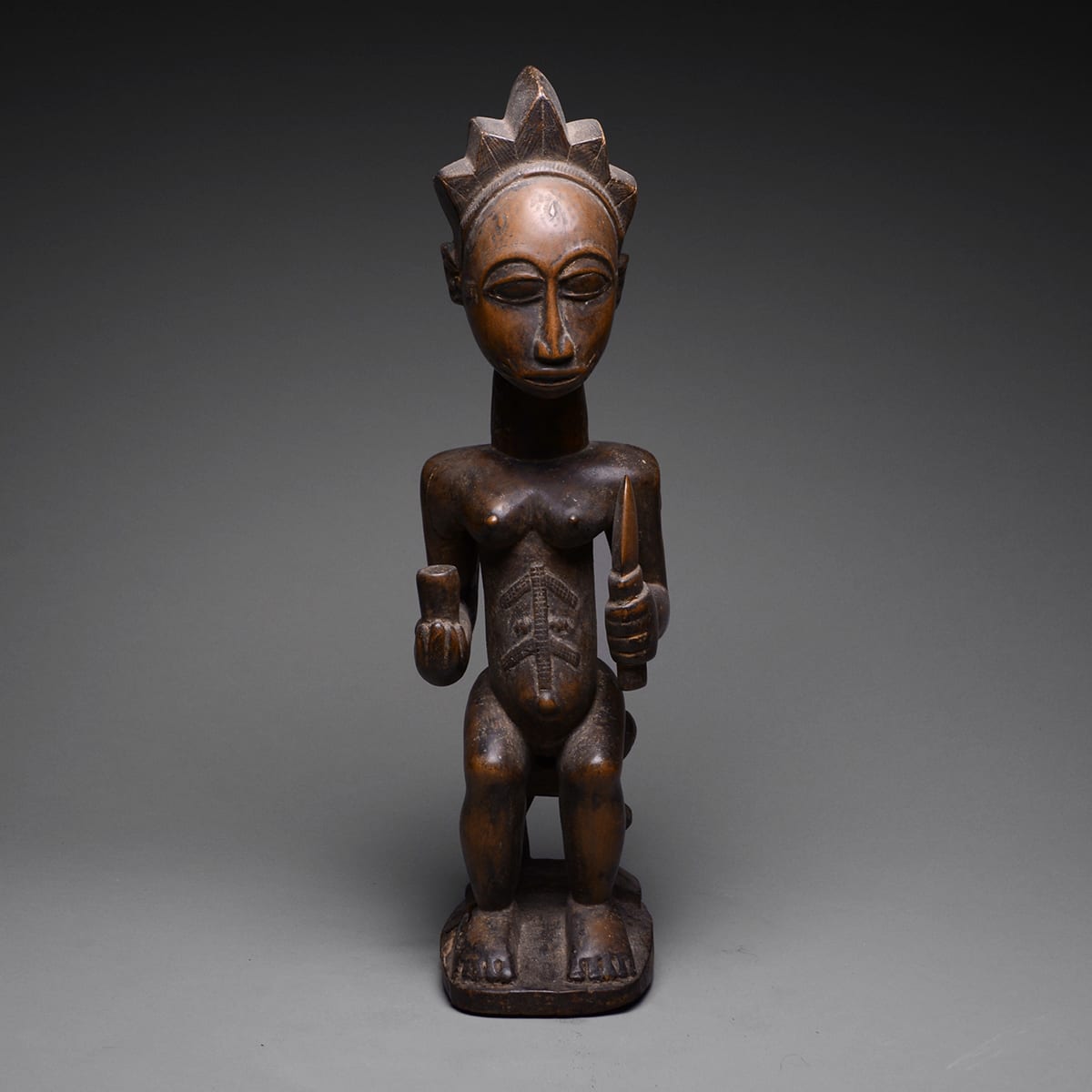Baule Wooden Sculpture of a Seated Woman, 20th Century CE
Wood
height 48.9 cm
height 19 1/4 in
height 19 1/4 in
PF.6273
Further images
Seated upon a stool, the foremost symbol of royal authority in Africa, this sculpture most likely represents a queen mother. Her intricately styled coiffure featuring a series of five tiered...
Seated upon a stool, the foremost symbol of royal authority in Africa, this sculpture most likely represents a queen mother. Her intricately styled coiffure featuring a series of five tiered crests as well as a braided tail in the back reflects her high-ranking status and overwhelming beauty. Futhermore, the raised scarifications that cover her face and body are considered both prestigious marks of rank as well as symbols of her sexual desirability. Certain specific scars, like the grid pattern on her temple, are indicative of the Baule people and would identify her as a part of this tribe. Clearly, this woman is a person of noble rank who held an esteemed role within her society. Most Likely, this sculpture was commissioned by her relatives after she passed away to commemorate her life. The Baule people believed that the spirits of the deceased continued to play an active role in the life of their descendants. By creating memorial sculptures and presenting it with proper sacrifices and libations, the relatives of the deceased could influence the favor of the spirit. It is possible that libations once might have been left in the little offering cup she holds in her right hand. In her other hand, she brandishes what appears to be a dagger, no doubt symbolizing her authority and power. Judging by the beauty and social position of this woman, there is no doubt that she would have continued to play a major role within society even after her bodily departure. Seated upon her royal throne, she continues to look down upon us her subjects from the next world. Through our worship and reverence, her powers are maintained if not heightened. From beyond the grave, she rules with benevolent grace and dignity, altering the course of our lives and the path of the tribe.







